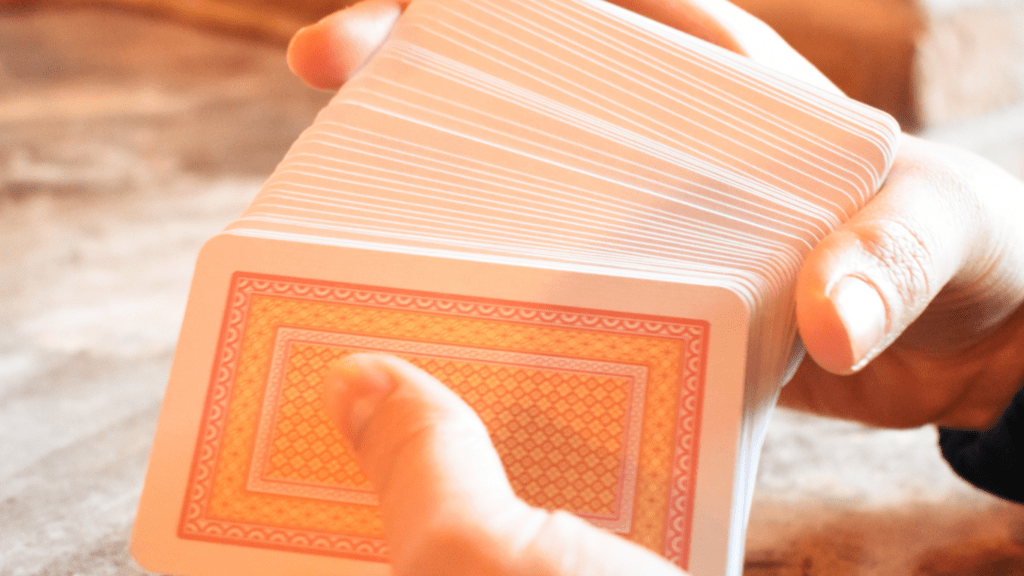Whether you’re a card player looking to up your game or a magician aiming to impress your audience, mastering the art of shuffling is essential. A smooth shuffle not only enhances your performance but also adds an air of professionalism that can set you apart.
I’ve spent years perfecting my technique, and I’m excited to share the secrets that can elevate your shuffling skills from basic to breathtaking. In this guide, we’ll explore various shuffling techniques that will not only make you look like a pro but also improve your overall card handling.
From the classic riffle shuffle to the more advanced overhand shuffle, you’ll discover tips and tricks that can transform your approach. Get ready to shuffle with confidence and flair, as I take you through the steps to becoming a card-shuffling master.
Understanding the Basics of Shuffling
Shuffling forms the foundation of any card game or magic performance. Mastering shuffling techniques enhances both skill and presentation, making your gameplay more engaging and credible.
Importance of Shuffling
Shuffling serves several critical functions. First, it ensures randomness in card distribution, preventing predictability. Second, it increases the overall enjoyment of card games by maintaining suspense and excitement.
Lastly, when performed smoothly, it reflects professionalism, adding to the overall entertainment value, especially in magic performances.
Types of Shuffles
Several shuffling techniques exist, each serving unique purposes:
- Riffle Shuffle: This classic method involves splitting the deck into two halves and interleaving the cards. It’s effective for creating a well-mixed deck.
- Overhand Shuffle: This technique involves taking a small portion of cards from the top of the deck and moving them to the back. It’s simple and useful for casual play.
- Hindu Shuffle: In this method, cards are held in one hand while the other hand draws a small number of cards off the top, transferring them to the bottom. It allows for control and is commonly used by magicians.
- Faro Shuffle: This precise method interlaces the cards perfectly, making it more complex. It’s often used for specific games where order matters.
Each shuffle technique offers advantages depending on your purpose, whether it’s playing cards, performing magic, or simply impressing your friends.
Essential Techniques for Card Players
Mastering essential shuffling techniques enhances gameplay and adds flair to performances. Here are some effective methods for card players.
Overhand Shuffle
The overhand shuffle is straightforward yet effective. I grasp the deck with one hand, using my thumb on the back and fingers on the front. I pull segments of cards off the top, letting them fall in my other hand, repeating this until I feel satisfied with the mix.
This technique offers control over the order, making it ideal for maintaining sequence in casual play.
Riffle Shuffle
The riffle shuffle mixes cards thoroughly and looks impressive. I split the deck in half, holding one in each hand. I then bend the edges slightly and release the cards so they interleave as they fall. This shuffle promotes randomness, essential for fair play in games.
Practicing this technique enhances fluidity and creates a visually appealing shuffle.
Hindu Shuffle
The Hindu shuffle enables better control and is useful for various contexts. I hold the deck in one hand while gripping about half the deck with my other hand. I pull the top sections away, allowing cards to fall into my palm.
This shuffle suits magic tricks, as it allows me to maintain specific cards on top or bottom, enhancing mystery and skill in performances.
Advanced Shuffling Techniques for Magicians
Advanced shuffling techniques elevate a magician’s craft, offering control and presentation. Below, I’ll detail several essential methods that help create astonishing effects during performances.
Faro Shuffle
The Faro shuffle delivers precise card interleaving, producing a structured deck order. It’s done by splitting the deck into two equal halves and interlacing them seamlessly. Mastering the Faro shuffle allows for predictable arrangements, an advantage in card tricks.
Performers often utilize it to set up specific card sequences or create impressive reveals. To execute the Faro shuffle effectively, practice achieving an even split and maintaining tension in your hands while merging the cards.
Table Shuffle
The table shuffle, often called the “table riffle,” requires a flat surface and adds finesse to card handling. This technique involves tossing the cards into a single pile on the table, followed by a riffle or overhand execution to blend them.
The sound of cards hitting the table adds an auditory element, enhancing the performance’s engagement. Precise timing and control help maintain the appearance of randomness while keeping critical cards in specific locations.
False Shuffle Techniques
False shuffles maintain the deck’s order while appearing casual. Techniques like the “Misdirection Shuffle” involve a series of cuts that preserve the original sequence beneath the surface. By practicing these techniques, magicians can shuffle effectively without altering the card order, making it seem like a complete mix.
Key examples include the “Zarrow Shuffle,” which creates a convincing illusion while doing nothing to the rear card’s position. Perfect your false shuffles through repetition and refining your grip to enhance believability during performances.
Practicing Your Shuffle
Practicing shuffling techniques is essential for achieving consistency and finesse. Focused practice methods aid in developing proficiency, making shuffling feel natural during card games or performances.
Tips for Building Muscle Memory
- Repetition: Shuffle the cards daily, targeting specific techniques. Aim for 10-15 minutes of focused practice.
- Slow Practice: Perform each shuffle slowly to ensure proper technique before increasing speed. Gradually build up to a comfortable rhythm.
- Use a Mirror: Practice in front of a mirror to observe your technique. This helps identify areas for improvement and reinforces muscle memory.
- Consistent Environment: Shuffle in the same setting with minimal distractions. A controlled environment enhances focus and retention.
- Set Goals: Identify a specific skill to improve during each practice session. This targeted approach leads to measurable progress over time.
Drills and Exercises
- Riffle Shuffle Drill: Start with half the deck in each hand. Riffle the cards together, releasing them evenly. Repeat until the motion feels fluid.
- Overhand Shuffle Drill: Hold the deck in one hand. Gather small groups of cards with the other hand, allowing them to fall gradually. Perform this for five minutes daily.
- Faro Shuffle Exercise: Perform a complete Faro shuffle, alternating between two equal halves of the deck. Practice until achieving a perfect interleaving.
- Mixing Drill: Combine multiple shuffling techniques in one session. For example, start with a riffle shuffle, follow with an overhand shuffle, and finish with a Hindu shuffle. This promotes adaptability.
- Tempo Challenge: Set a timer and attempt to complete a specific number of shuffles within that time. This activity builds speed while maintaining accuracy.
By implementing these strategies and drills, shuffling techniques improve effectively, enhancing performance in gameplay and magic.


